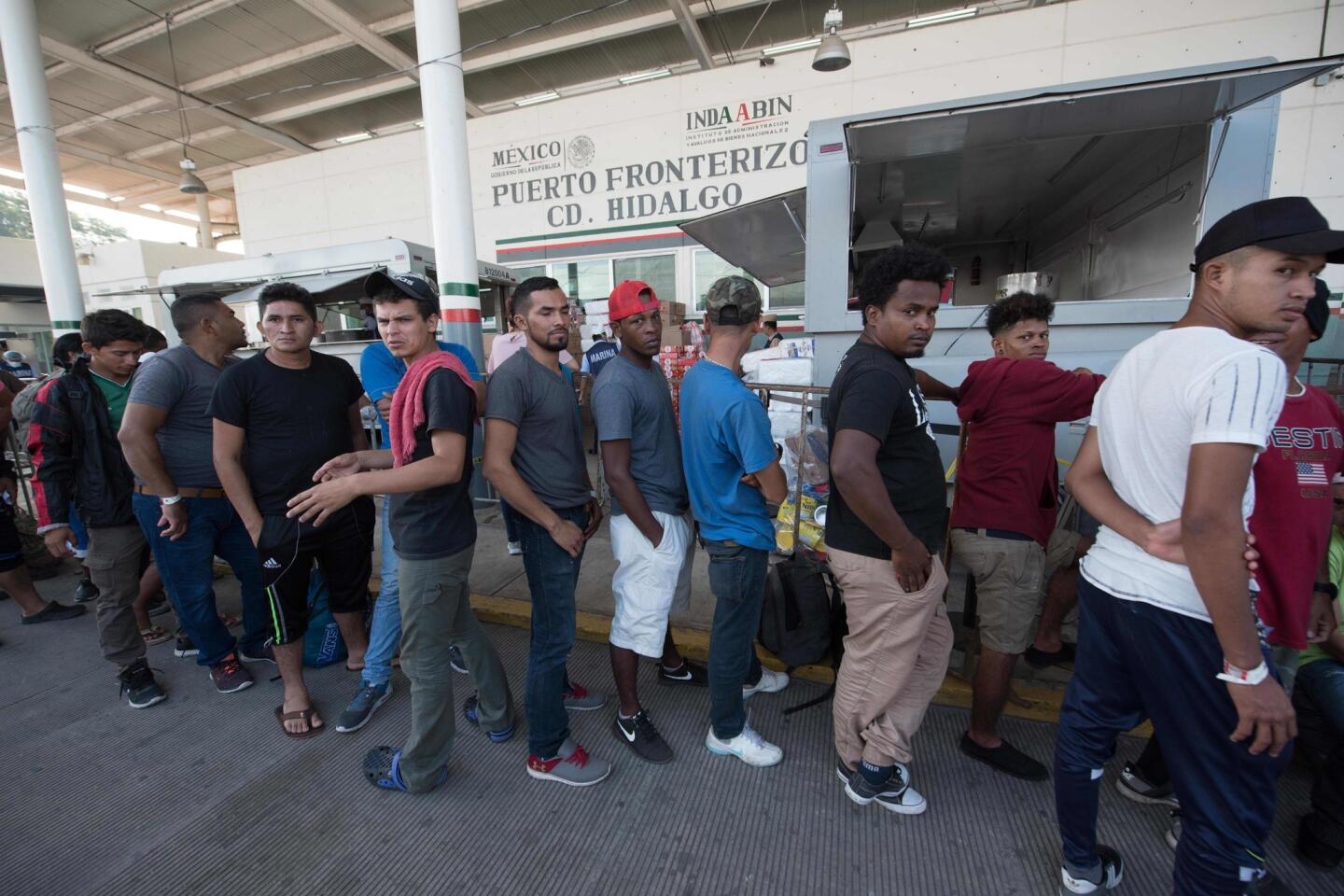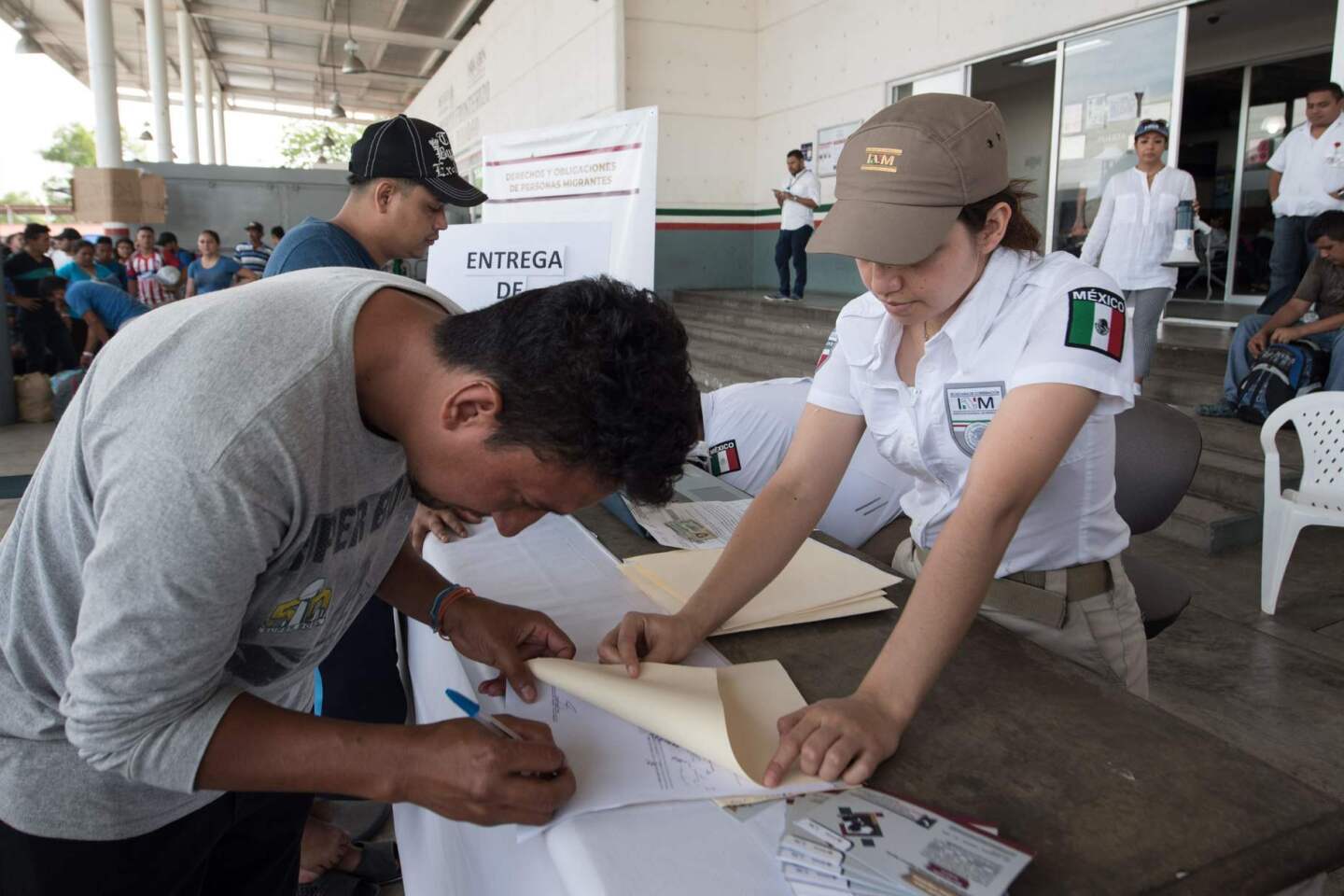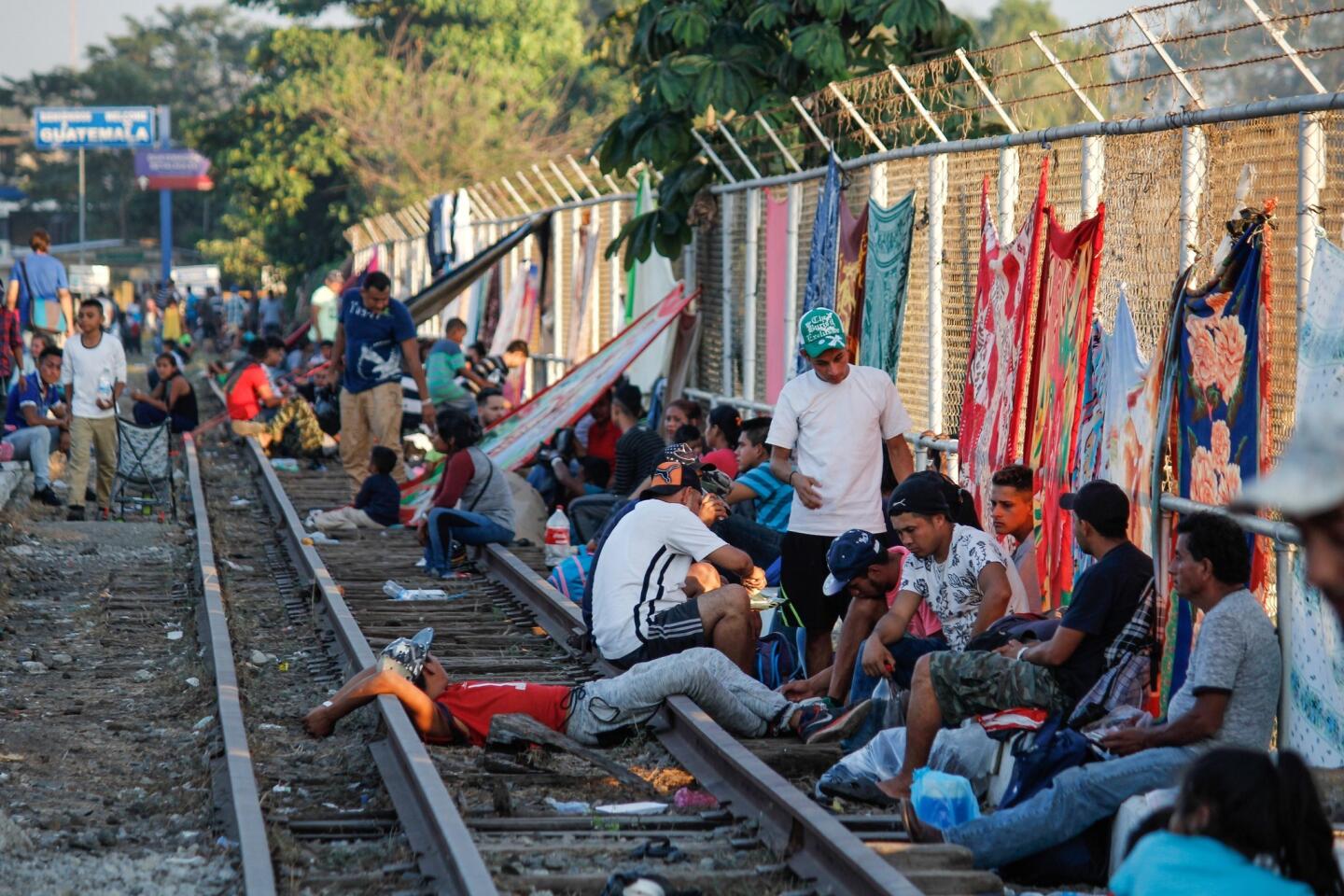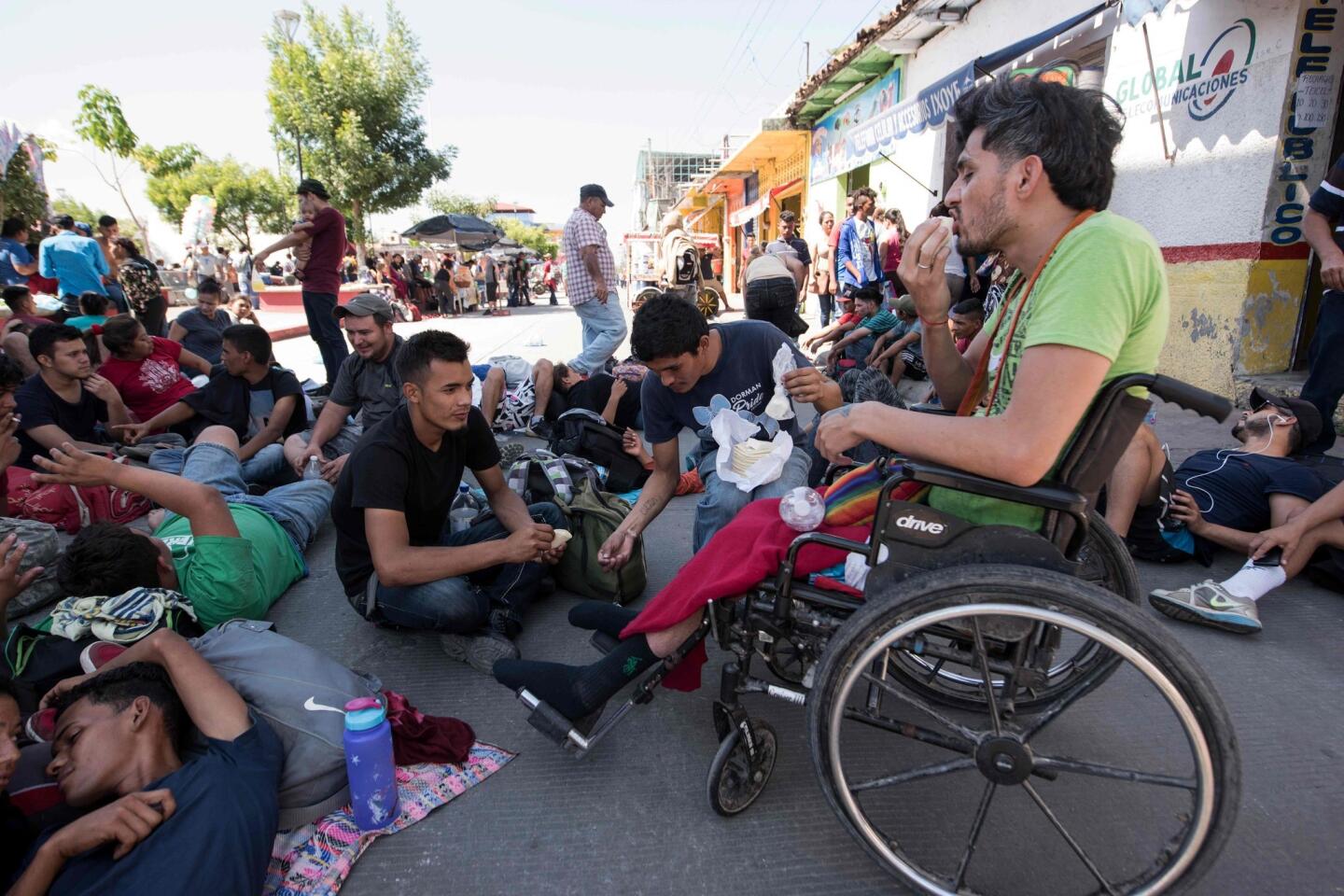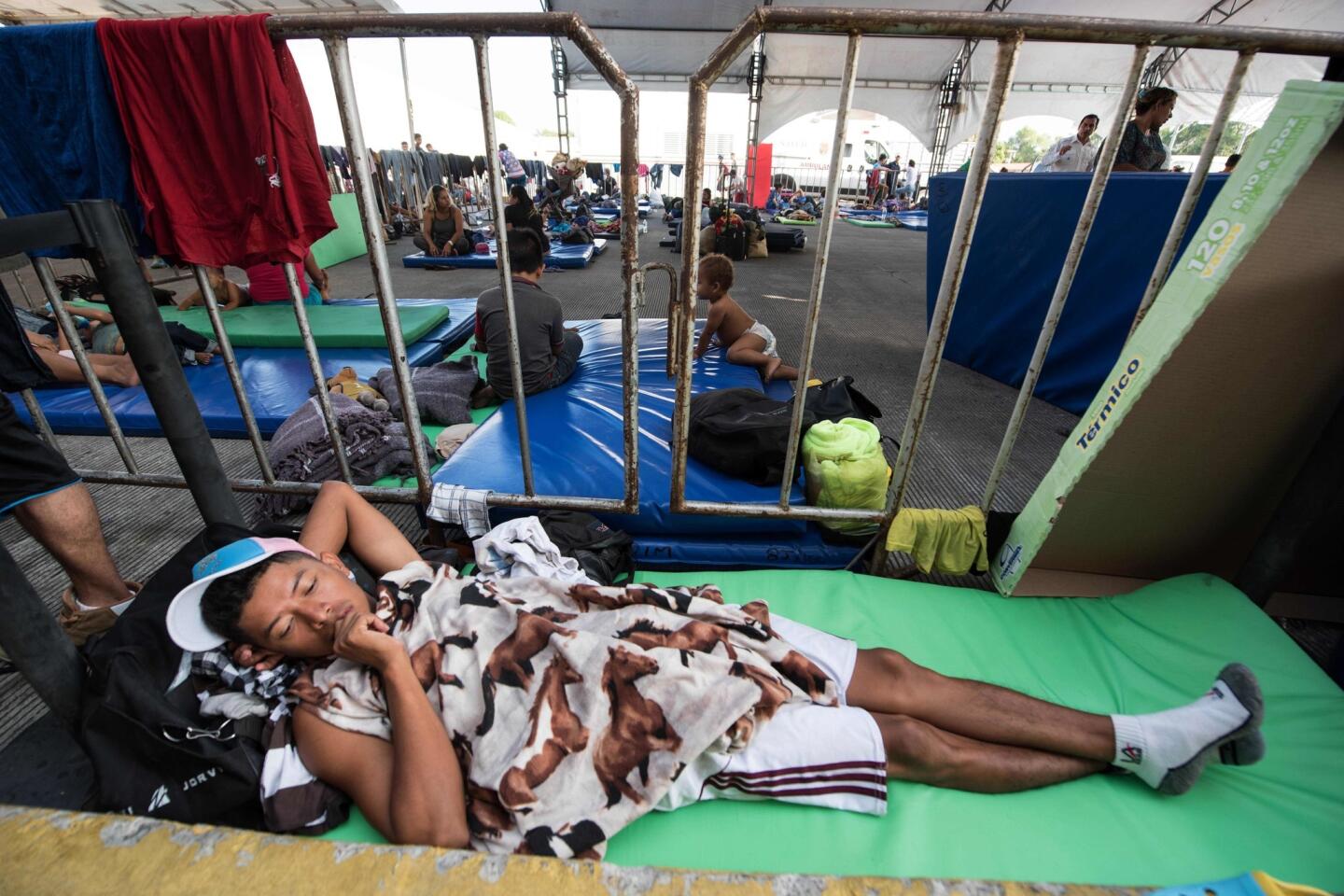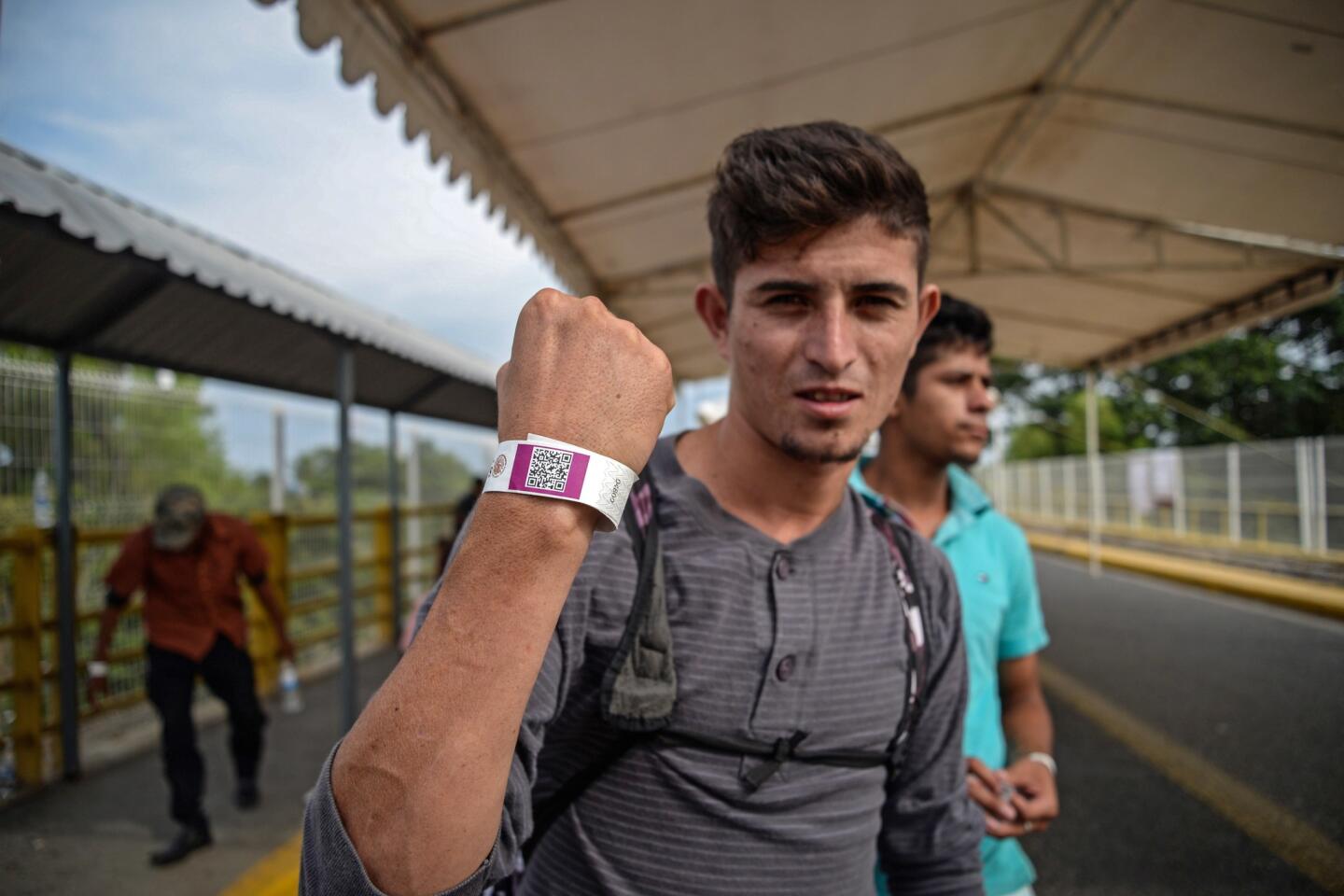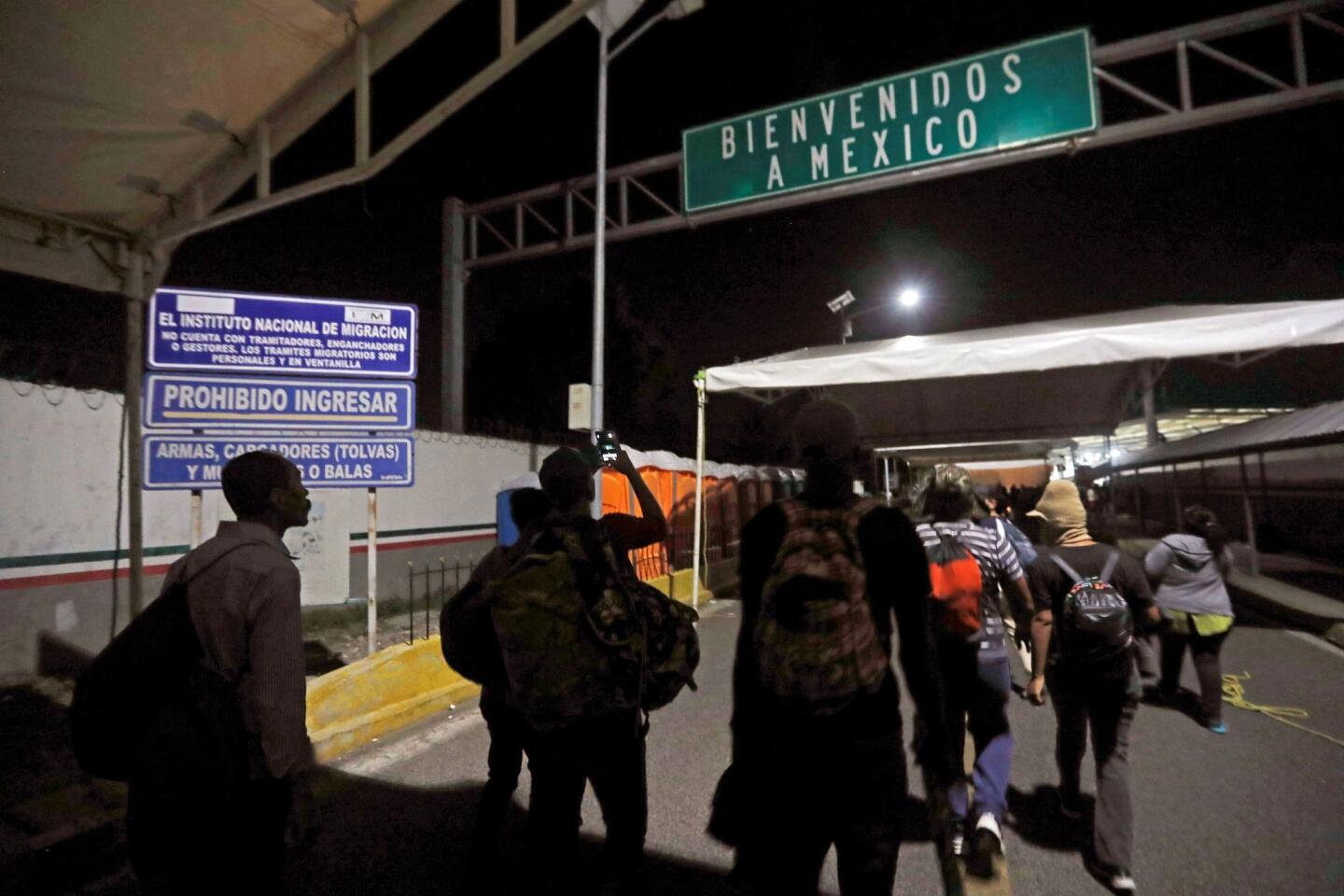Thousands of migrants at Mexico’s southern border seeking new humanitarian visas
- Share via
Reporting from Ciudad Hidalgo, Mexico — A decision by Mexico’s new government to liberalize entry rules for foreigners seeking “humanitarian” visas has in recent days sparked a new influx of Central Americans, many of them intent on making it to the United States.
Most are not converging on Mexico’s southern border here in organized caravans, but rather in groups drawn by news that the government is offering the one-year visas — which include the right to work in Mexico, travel freely in the country, and leave Mexico and return.
Although some applicants say they may consider remaining in Mexico, many acknowledge that their ultimate aim is to enter the United States and apply for political asylum.
Mexico said Thursday it had received more than 12,000 applications for the new humanitarian visas here at its southern border post with Guatemala, nearly 10,000 adults and more than 2,000 minors. The number of applicants is growing each day.
The bridge spanning the Suchiate River — which forms the frontier between Mexico and Guatemala — is packed with hundreds of visa applicants, some sleeping on the bridge to await their turn.
Thousands are waiting for visas on the Mexican side, here in Ciudad Hidalgo, and thousands more wait in the Guatemalan town of Tecun Uman. More are reportedly on the way north.
The vast majority of applicants are Central Americans, mostly Hondurans, but there are also considerable numbers of Guatemalans, Salvadorans and Nicaraguans.
The visas are a result of the liberalized entry policies of Mexican President Andres Manuel Lopez Obrador, a leftist populist who took office on Dec. 1 vowing to respect the human rights of Central American migrants seeking to enter Mexico.
Previous Mexican administrations, under pressure from Washington, set up strict border controls and deported tens of thousands of undocumented Central Americans in recent years.
But Lopez Obrador has signaled that he is intent on a different approach — one that could draw concerns in Washington, where the Trump administration has made reducing Central American migration a priority.
“We heard about the opportunity for visas and decided this was our chance,” said Susy Polanco, who was among an extended family of eight Nicaraguans waiting Wednesday on the bridge over the Suchiate.
Among her co-travelers were her 8-year-old daughter, Genesis, and an 18-month-old niece, Gimena.
All eight plan to travel to the U.S.-Mexico border, present themselves to American authorities and seek political asylum in the United States, Polanco said.
“There is too much repression now in Nicaragua,” added Polanco, who said her family and most of her neighborhood in Managua, the capital, were against the government led by President Daniel Ortega. The Ortega government, which has faced more than a year of opposition protests, has stepped up oppression including illegal arrests, torture and closed trials in recent months, critics say.
The new influx in southern Mexico follows the arrival here last week of the most recent organized caravan of some 2,000 migrants. They were the first to be eligible for the new visas.
Word that Mexico was offering caravan participants the new humanitarian visas traveled quickly through Central America and prompted others to make their way to the Mexican border bridge here, applicants said in interviews.
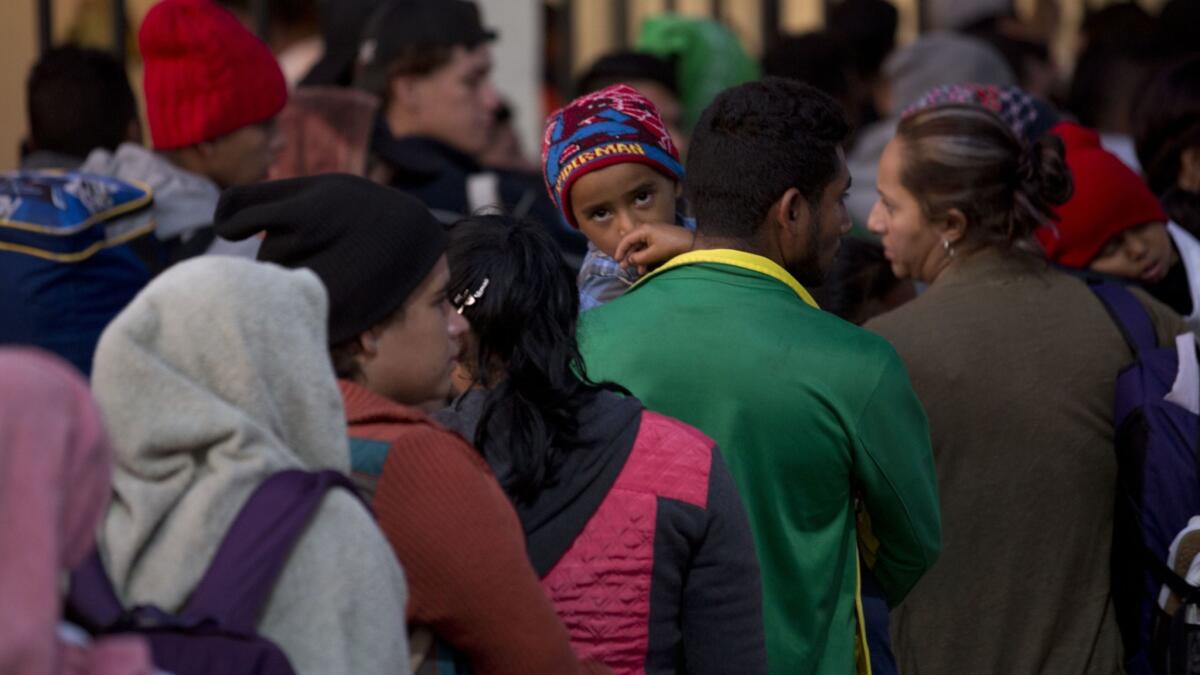
“Of course, we all want to go to the United States; that’s where opportunity is,” said Roberto Garcia, 29, one of a group of Hondurans using a towel with a U.S. flag painted on it to shade themselves from the intense midday sun on the bridge. “We know Trump says he doesn’t want us, but maybe he will change his mind.”
Last week, as the most recent caravan was entering Mexico, Trump charged in a Twitter message that Mexico was “doing NOTHING to stop the Caravan, which is now fully formed and heading to the United States.”
Trump has described previous migrant caravans as an “invasion” and a threat to U.S. security, and his dispute with Congress about building a wall along the U.S.-Mexico border has resulted in an ongoing government shutdown.
Migrants seeking Mexico’s new visas face at least a five-day wait here as authorities process their applications. Mexican officials have been providing food, water, medical attention and other services to applicants.

As Hondurans wait to apply for humanitarian visas in Mexico, they chant for the resignation of their country’s president, Juan Orlando Hernandez.
On Wednesday, Mexico’s Interior secretary, Olga Sanchez Cordero, toured the Mexican immigration facilities here with other officials and received a rousing ovation from the multitudes waiting in line on the bridge.
Once they receive their visas, recipients will be free to travel and work anywhere in Mexico, without a need to hunker down in caravans as protection against deportation — and against gangs that often prey on Central Americans traversing Mexico illegally.
“This is a great opportunity for me,” said Jose Maria Perdomo, 49, who said he was deported from the United States nine months ago but would eventually like to reunite with two daughters, ages 16 and 17, who live in Iowa. “Yes, maybe I will stay in Mexico for a while and work — the situation here is a lot better than in Honduras. But my ultimate goal is to be with my children again in Iowa.”
In a Twitter message, Mexico’s National Immigration Institute said authorities had received 8,727 petitions for humanitarian visas from adult migrants since last week, and 2,024 from minors.
Most were from Central America, but those seeking the visas also included scattered numbers of Haitians, Brazilians and Angolans.
Cecilia Sanchez of The Times’ Mexico City bureau and special correspondent Liliana Nieto del Rio in Ciudad Hidalgo contributed to this report.
Twitter: @PmcdonnellLAT
More to Read
Sign up for Essential California
The most important California stories and recommendations in your inbox every morning.
You may occasionally receive promotional content from the Los Angeles Times.
